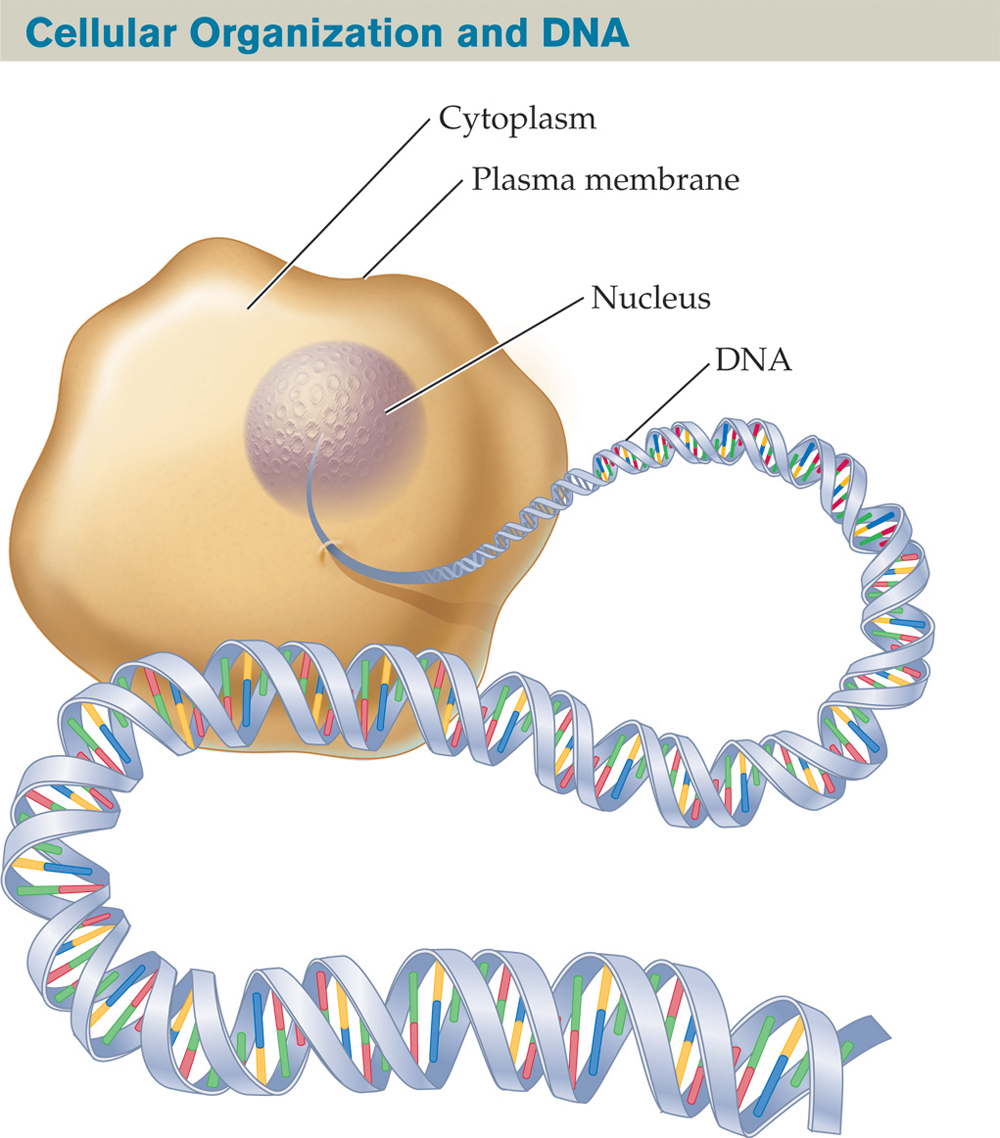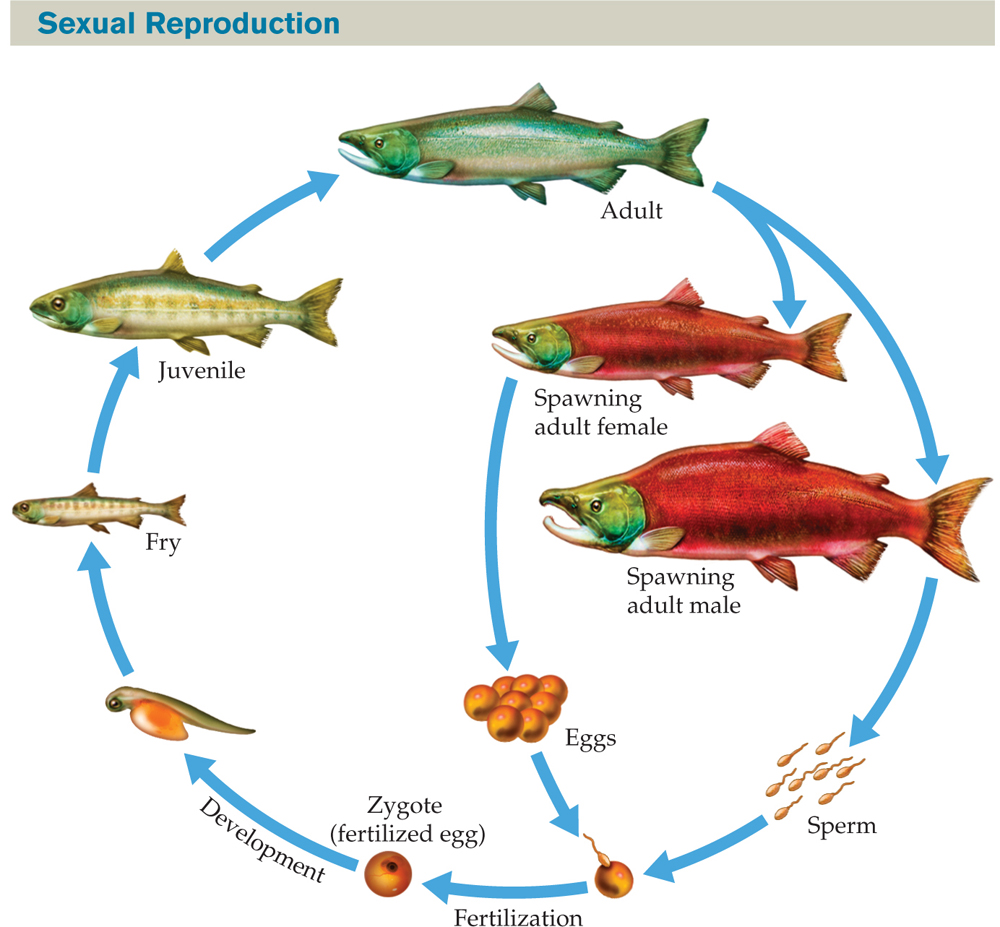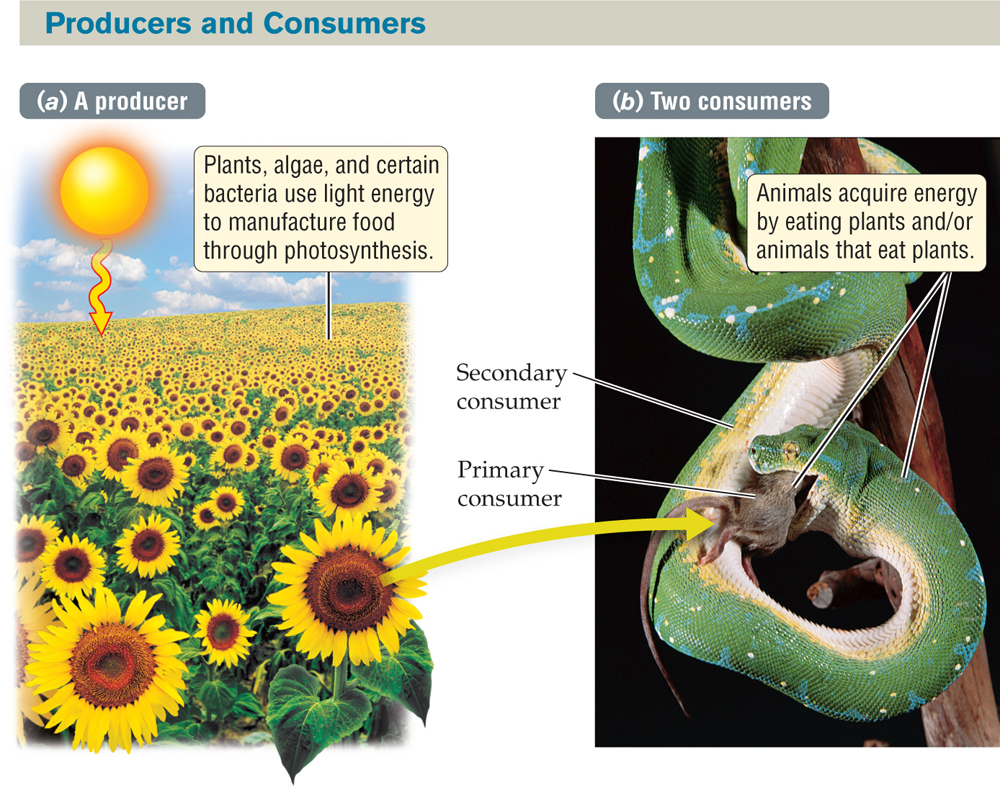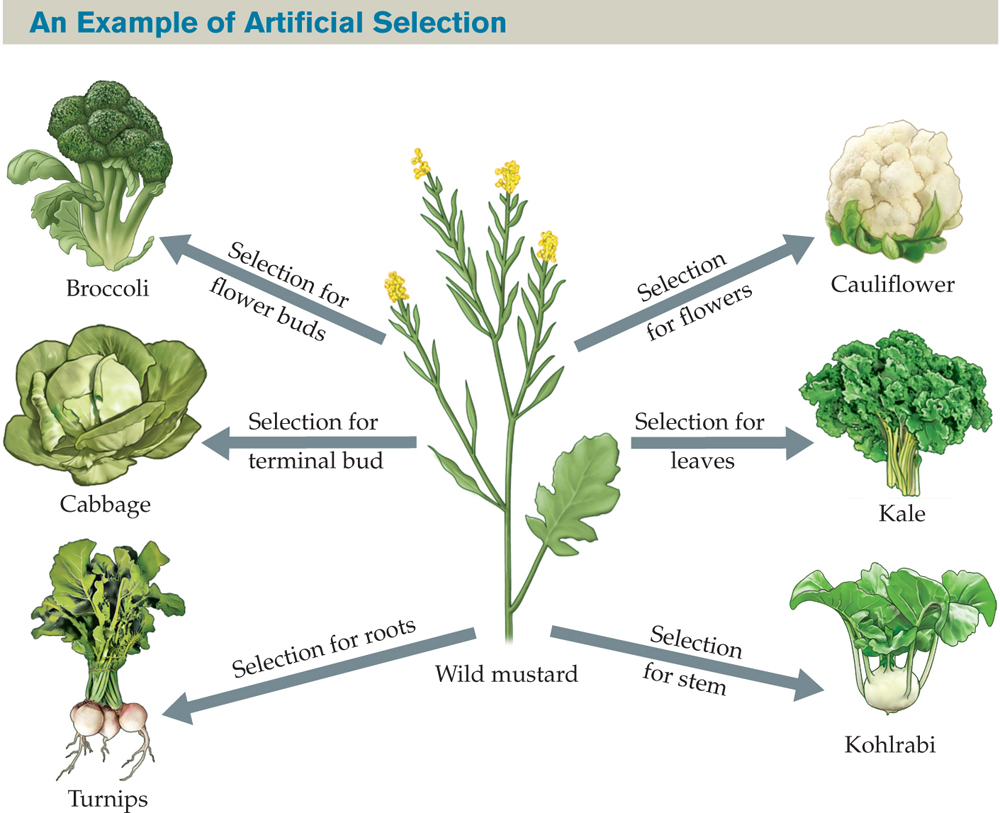LIVING ORGANISMS |
■ are composed of one or more cells. |
■ reproduce using DNA. |
■ obtain energy from their environment to support metabolism. |
■ sense their environment and respond to it. |
■ maintain a constant internal environment (homeostasis). |
■ can evolve as groups. |
1.4 |
The Characteristics of Living Organisms |
The science that we focus on in the rest of this book is biology, the science of life. But what is life? Although many have tried, no one has produced a simple definition of life that encompasses the great diversity of living forms—from massive redwoods to microscopic bacteria and everything in between. But according to the theory of evolution, all living organisms are descendants of a common ancestor that arose billions of years ago. The theory predicts that as a consequence of their common origin, all living things share some important characteristics (TABLE 1.4). We consider each of these characteristics in the sections that follow.
| TABLE 1.4 | Characteristics of Living Organisms |
Living organisms are composed of cells
The first organisms were single cells that existed about 3.8 billion years ago. The cell is the smallest and most basic unit of life, the fundamental building block of all living things (FIGURE 1.12). Every cell is bounded by an oily layer called the plasma membrane. The interior of a cell—known as the cytoplasm—is a thick, aqueous (water-based) fluid studded with a number of structures that have specialized functions.
FIGURE 1.12 The Cell Is the Smallest Unit of Life
Each cell has a plasma membrane that acts as a barrier between its contents and the surrounding environment. Cells contain DNA, which carries genetic information from one generation to the next.
All organisms are made up of one or more cells. A bacterium (plural “bacteria”) consists of a single cell. In contrast, large organisms, such as orangutans and oak trees, are made up of many different kinds of specialized cells and are known as multicellular organisms. The human body, for example, is composed of about 10 trillion cells of 220 different types, including skin cells, muscle cells, brain cells, and cells that fight disease (immune cells).
Living organisms reproduce themselves via DNA
One of the key characteristics of living organisms is reproduction, the ability to produce offspring. Single-celled organisms, such as bacteria, can reproduce by dividing into two cells that are virtually identical copies of the original cell.
Multicellular organisms can reproduce in a variety of ways. Most plants and animals use sexual reproduction to produce offspring, which is the next generation of the organism. In sexual reproduction, male cells (sperm) fuse with female cells (eggs) to produce a single cell (zygote) in the process known as fertilization (FIGURE 1.13). The zygote divides many times to produce a juvenile (young) offspring that matures into an adult—a process known as development.
FIGURE 1.13 In Sexual Reproduction, Offspring Receive Genetic Information from Two Different Individuals
Some organisms—including many plants and some animals—can multiply themselves through asexual reproduction—that is, without the involvement of specialized reproductive cells such as sperm and eggs. Sponges can bud off new individuals, and many plants can produce side shoots that can break off and develop into new individuals.
Why do offspring resemble their parents? Why do little acorns grow into mighty oaks, not into frogs? The reason is that parents transmit information to their offspring that specifies how to build an individual very like the parents themselves. That genetic information is carried in the form of a large chemical called DNA, or deoxyribonucleic acid (dee-ox-ee-rye-boh-noo-clay-ic). DNA is made up of many atoms held together in a ladderlike pattern and twisted into a spiral along its length—a structure known as the double helix (see Figure 1.12). In the cells of plants and animals, DNA is housed inside a special structure, called the nucleus (noo-klee-us; plural “nuclei”), bounded by its own membranes. DNA stores the genetic code that spells out the structure, function, and behavior of an organism, and it is passed on from parents to offspring.
Living organisms obtain energy from their environment
All organisms need energy to persist. Organisms use a wide variety of methods to capture this energy from their environment. The capture, storage, and use of energy by living organisms is known as metabolism.
Organisms that obtain metabolic energy from the nonliving part of their environment are called producers or autotrophs (FIGURE 1.14a). Plants, algae, and certain bacteria are examples of producers that capture light energy in a metabolic process called photosynthesis. Photosynthetic organisms use the captured light energy to manufacture food, such as sugars.
FIGURE 1.14 Energy Capture by Organisms
Whereas plants can capture energy from sunlight through photosynthesis (a), animals must get their energy by eating other organisms (b). The green tree python pictured in (b) is ingesting a source of energy (a rat) that itself derived energy from eating plants.
Consumers (also called heterotrophs) are organisms that acquire food from the living part of their environment (FIGURE 1.14b). They do so by eating producers, or by eating other consumers that feed on producers. Animals are a familiar example of consumers.
Living organisms sense their environment and respond to it
To survive and reproduce in their local environment, also called their habitat, living organisms should be able to gather information from their surroundings and react to it in ways that are beneficial to them. Living organisms sense many aspects of their external environment, from the direction of sunlight (as the sunflowers in Figure 1.14a illustrate) to the presence of food and the suitability of a potential mate. In biology, sensing and responding to external cues is termed behavior. Behavior is most obvious—often dramatically so—in animals; however, all kinds of organisms, from bacteria to plants, exhibit behavior.
Like humans, many animals can smell, hear, taste, touch, and see the environment around them. Some organisms can sense things that humans are not good at perceiving, such as ultraviolet light, electrical fields, and ultrasonic sounds. Plants can sense gravity and ensure that their roots grow toward it, while their shoots grow away from it. Some bacteria have magnetic particles inside that act like a miniature compass; they direct the migration of the cell by signaling which way is north or south, up or down.
Living organisms actively maintain their internal conditions
Living organisms sense and respond not only to external conditions, but also to their internal state. Most cells, and many multicellular organisms as well, maintain remarkably constant internal conditions—a process known as homeostasis. For example, the internal temperature of the human body is held at 98.6°F (37°C) on average. When heat or cold threatens to alter the core body temperature, our bodies quickly respond—for example, by sweating to cool us (FIGURE 1.15) or by shivering to warm us.
FIGURE 1.15 Homeostatic Mechanisms Enable Organisms to Maintain a Relatively Constant Internal State
Core body temperature varies slightly from person to person, and over the course of the day in a healthy individual. The average daily oral temperature for most people is 37°C or 98.6°F.
Groups of living organisms can evolve
Biological evolution refers to a change in the overall genetic characteristics of a group of organisms from one generation to the next. Biological evolution is considered a fact because scientists can demonstrate evolutionary change through repeatable experiments—in a matter of days using bacteria growing in a lab dish, for example.
The process by which humans cause evolutionary change in other organisms is known as artificial selection (FIGURE 1.16). The dramatic changes brought about by artificial selection in domesticated plants and animals inspired nineteenth-century biologists to wonder whether nature—instead of human intervention—could cause new forms of life to evolve from ancestral forms.
FIGURE 1.16 Evolution of Wild Mustard through Domestication
In artificial selection, humans are the selective agents. All the crops shown here were created by Mediterranean gardeners through selective breeding of genetically varied wild mustard plants over the course of about 200 years.
Today, a great deal of evidence shows that groups of organisms evolve in their natural environment. An ancestral group can give rise to one or more descendant groups that are genetically unique. If the groups become so different from each other that they can no longer interbreed, we recognize them as different species. Why do groups of organisms evolve in their natural environment? We discuss one of the mechanisms—natural selection—in Section 1.5.
Concept Check
1. What is the role of DNA in reproduction?
DNA stores information that can be passed from parent to offspring, through asexual or sexual reproduction.
2. Are humans producers or consumers in the food web? Why?
We are consumers because we must obtain energy from the living, rather than the nonliving, part of our environment.





